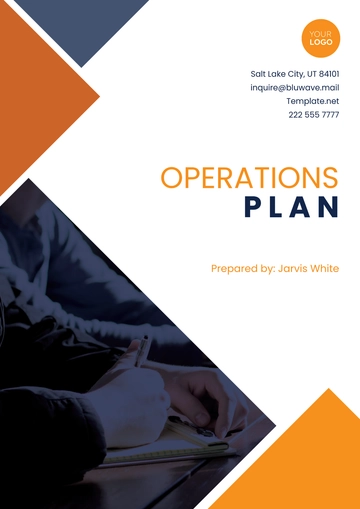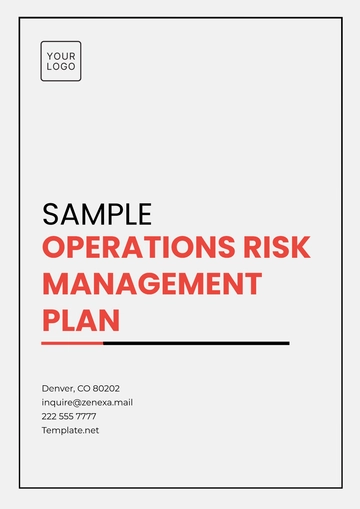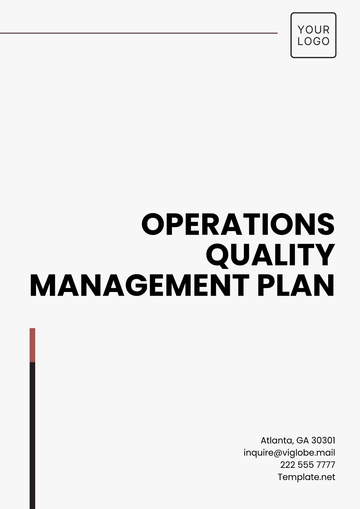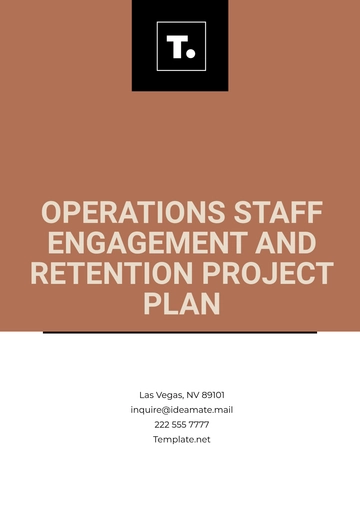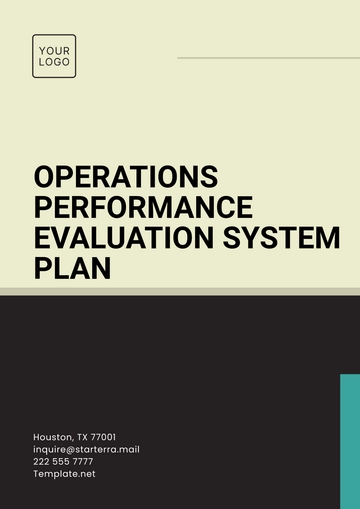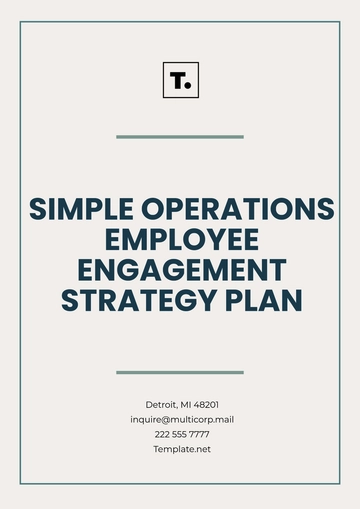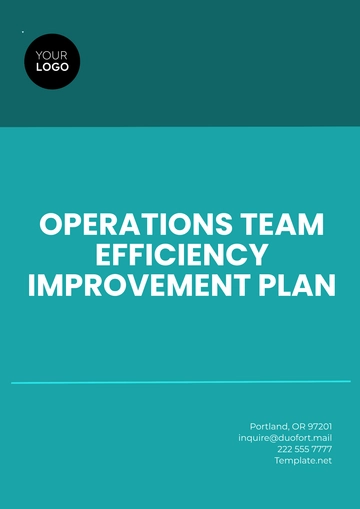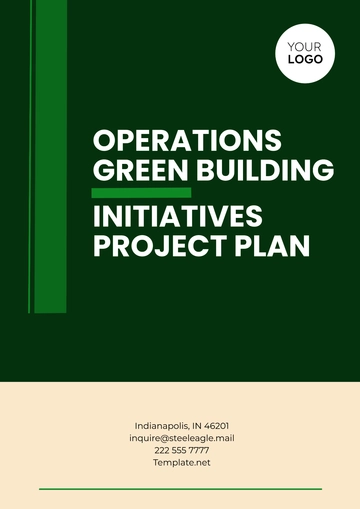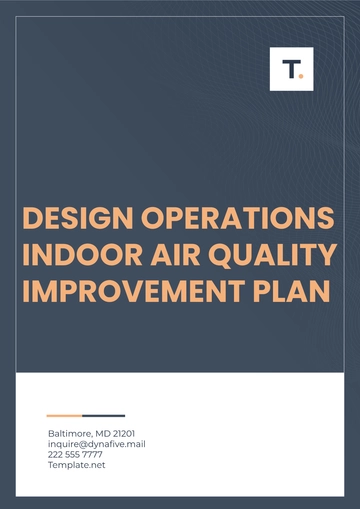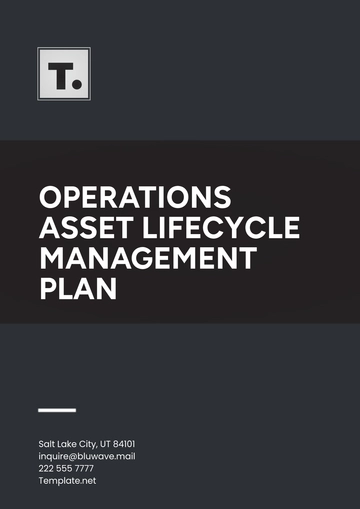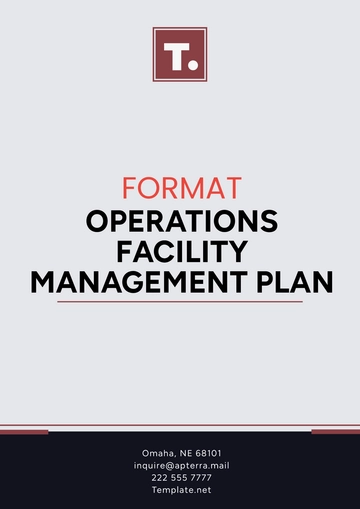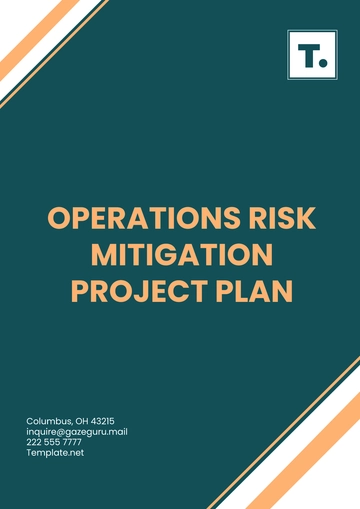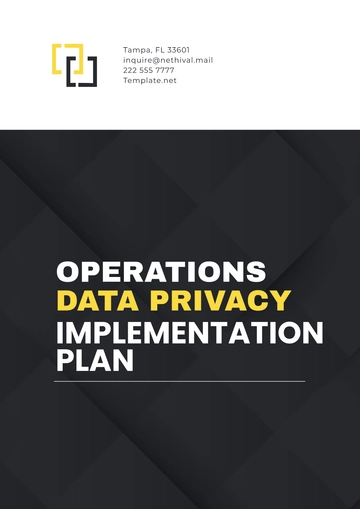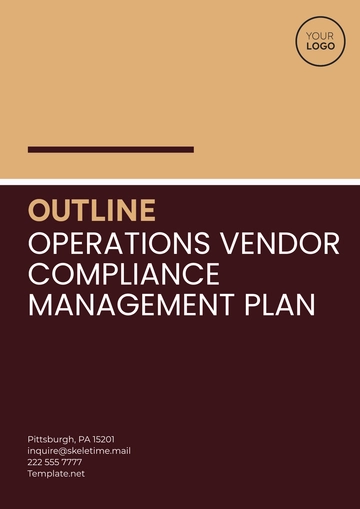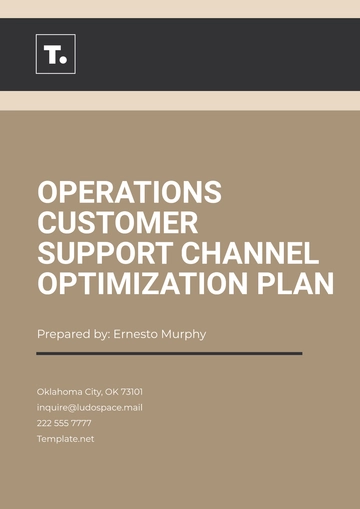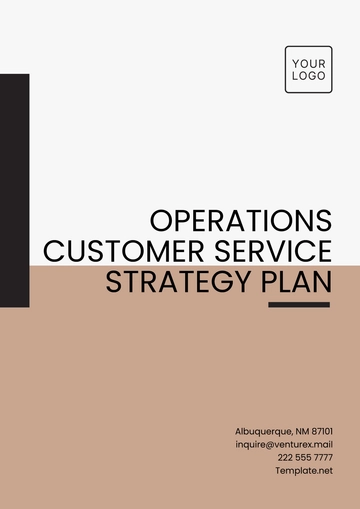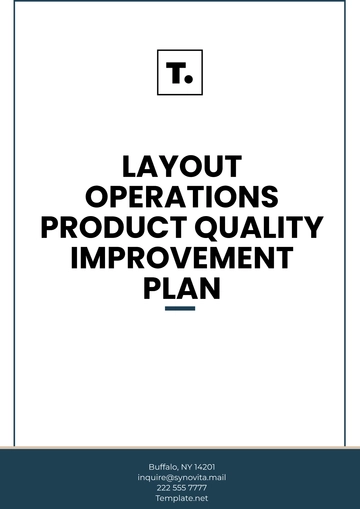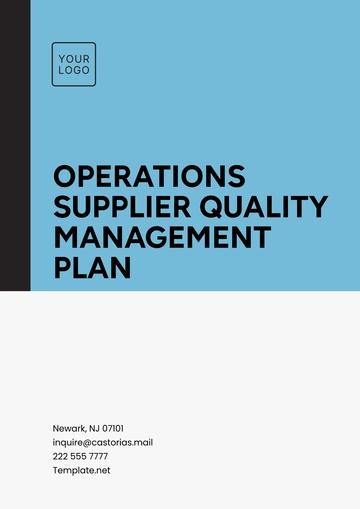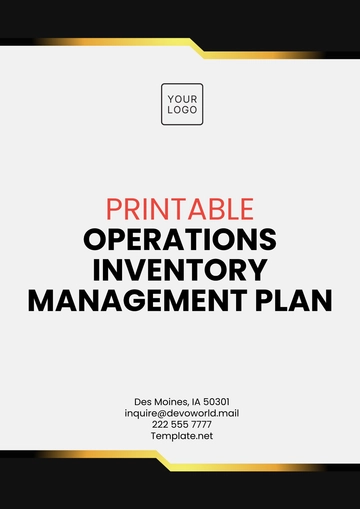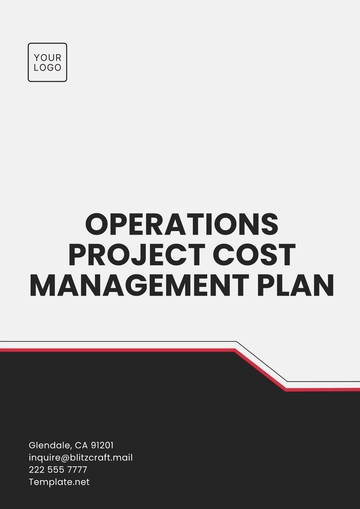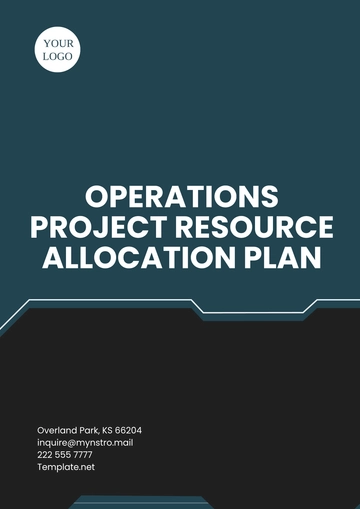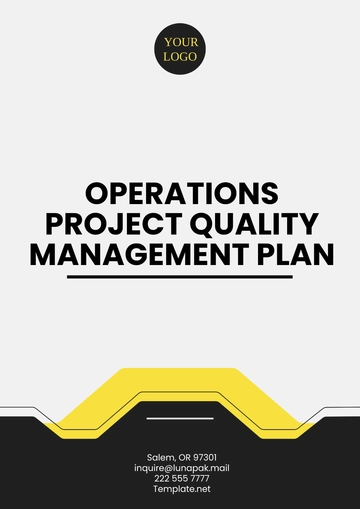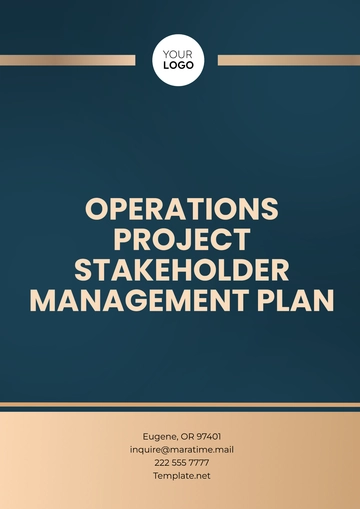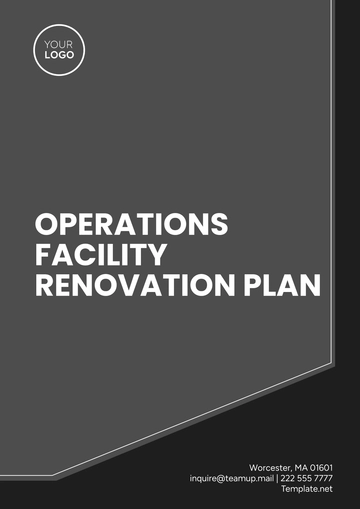Free Operations Energy Management Plan
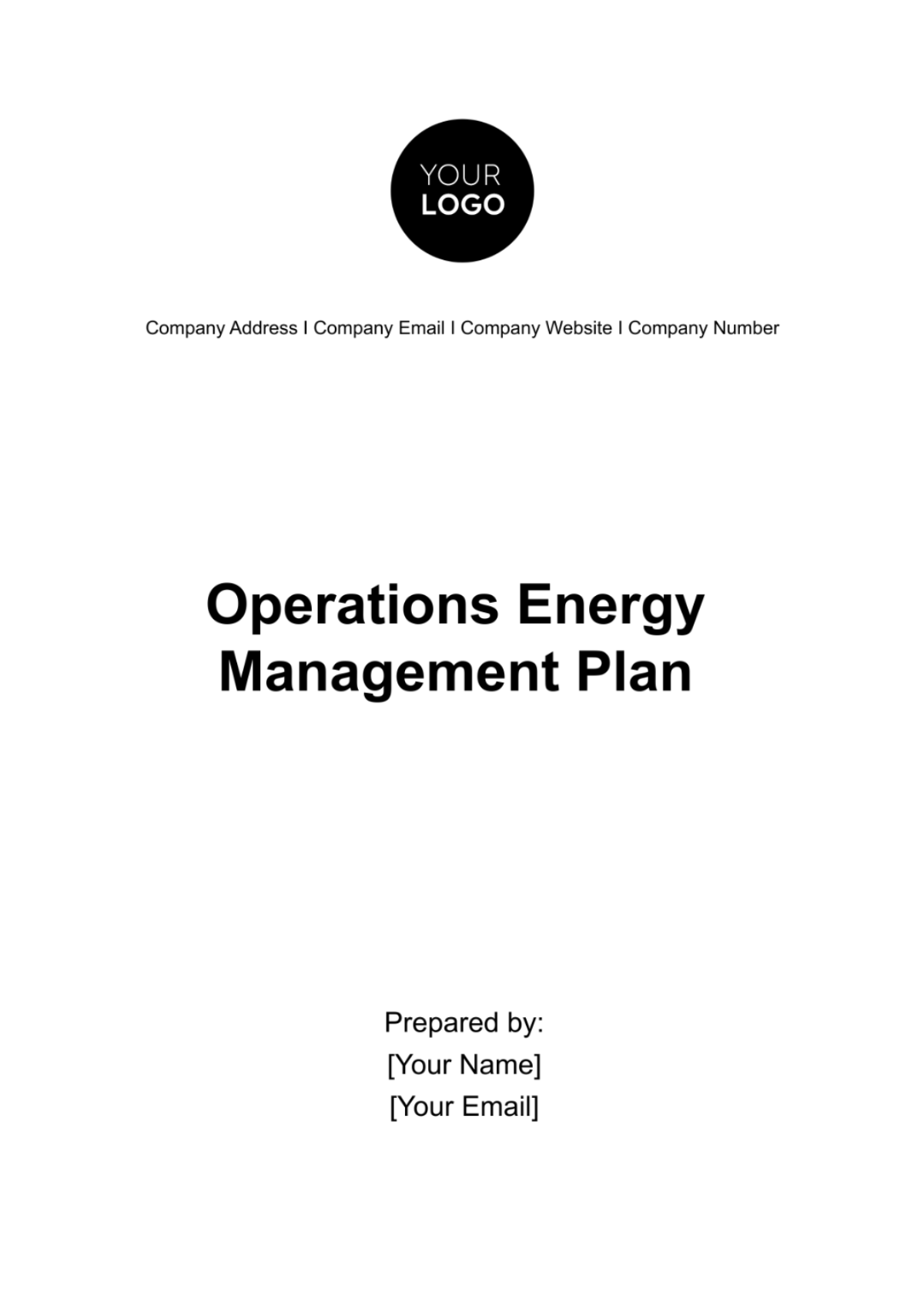
Prepared By: | [Your Name] |
Company: | [Your Company Name] |
Date: | [Date] |
1. Introduction
This Operations Energy Management Plan is designed to guide the organization in achieving sustainable energy practices while improving operational efficiency and reducing costs. The plan outlines a comprehensive approach to energy management, including strategies for reducing energy consumption, integrating renewable energy sources, and complying with regulatory standards. It is intended to support the organization's commitment to environmental sustainability and contribute to long-term energy savings.
2. Objectives
The key objectives of this plan are as follows:
Optimize Energy Use: Minimize energy waste and implement cost-effective energy-saving solutions across all operations.
Reduce Operational Costs: Lower energy expenses through efficient practices, technologies, and infrastructure upgrades.
Enhance Sustainability: Reduce the environmental footprint of the organization by adopting renewable energy sources and energy-efficient technologies.
Achieve Regulatory Compliance: Ensure adherence to local, national, and international energy regulations and standards.
Continuous Improvement: Foster a culture of continuous improvement in energy management and operational efficiency.
3. Energy Management Team
To oversee the implementation and management of this plan, an Energy Management Team will be established, comprising the following key roles:
Energy Manager: Responsible for the overall energy strategy, monitoring energy use, and coordinating energy-saving initiatives.
Facility Manager: Oversees day-to-day energy use in facilities and ensures energy-efficient operations.
Sustainability Officer: Focuses on integrating renewable energy sources and driving the organization's sustainability goals.
Employees: All staff will be trained to adopt energy-efficient practices and report inefficiencies.
4. Energy Consumption Assessment
4.1 Energy Audits
Regular energy audits will be conducted to identify inefficiencies, areas of improvement, and opportunities for reducing energy consumption. The energy audits will include:
Site Inspections: Evaluating lighting, HVAC systems, equipment, and overall infrastructure for energy efficiency.
Data Collection: Gathering data on energy use patterns, including peak demand periods and potential areas for energy savings.
Performance Benchmarks: Comparing energy performance against industry standards and similar organizations.
4.2 Current Energy Use
A baseline energy consumption report will be developed to track current energy usage patterns, highlighting areas where improvements can be made.
Annual Energy Consumption: Detailed breakdown of electricity, gas, and other energy sources.
Peak Consumption Periods: Identifying when the organization uses the most energy and how consumption can be shifted to off-peak hours to reduce costs.
5. Energy Efficiency Strategies
5.1 Upgrading Equipment and Infrastructure
Lighting: Replace traditional lighting with energy-efficient LED fixtures.
HVAC Systems: Install smart thermostats and improve insulation to reduce heating and cooling costs.
Equipment: Upgrade to energy-efficient machinery and appliances to reduce energy consumption during operations.
5.2 Energy Monitoring and Control Systems
Implement energy management systems (EMS) to track and manage energy usage in real time.
Set up automated systems to control lighting, heating, and cooling based on occupancy and time of day.
Use predictive analytics to forecast energy needs and optimize resource allocation.
5.3 Employee Training and Engagement
Conduct regular training for employees on energy-saving practices, such as turning off lights when not in use, optimizing equipment use, and minimizing waste.
Launch awareness campaigns to promote energy efficiency across the organization.
Introduce incentive programs to encourage employees to adopt energy-efficient behaviors.
6. Renewable Energy Integration
6.1 Assess Feasibility of Renewable Energy Sources
Solar Energy: Conduct a feasibility study to assess the potential for solar panels on facility rooftops or unused land.
Wind Energy: Evaluate the viability of wind energy installations depending on the location.
Other Sources: Explore other renewable energy options such as geothermal and biomass, based on geographic and operational suitability.
6.2 Implementation Plan for Renewable Energy
Develop a timeline for the gradual transition to renewable energy sources.
Begin with small-scale installations, such as solar panels, and gradually scale up based on performance and savings.
Explore potential partnerships with renewable energy providers for energy purchasing agreements.
7. Compliance and Regulatory Standards
The organization will comply with relevant energy regulations, such as:
Energy Efficiency Standards: Adherence to national and international energy efficiency standards and certifications (e.g., ISO 50001).
Government Incentives: Take advantage of available government incentives for energy-efficient upgrades or renewable energy installations.
Environmental Regulations: Ensure compliance with environmental laws and regulations related to emissions, waste, and energy use.
8. Monitoring and Reporting
8.1 Energy Performance Tracking
Implement regular monitoring of energy consumption using advanced metering infrastructure (AMI).
Track performance metrics such as energy intensity (kWh per unit of production or square footage) and compare them against benchmarks and goals.
8.2 Annual Reporting
Prepare an annual report detailing energy usage, savings, sustainability achievements, and progress toward energy efficiency goals.
Share results with senior management and stakeholders to highlight successes and areas for further improvement.
9. Continuous Improvement
Regularly review the energy management plan to identify new technologies, practices, and policies that could further enhance energy efficiency.
Adjust the plan based on changing energy markets, technological advancements, and the organization’s evolving needs.
Encourage a feedback loop where employees and stakeholders can suggest improvements and share best practices.
10. Conclusion
The implementation of this Operations Energy Management Plan will help the organization achieve significant energy cost reductions, meet sustainability goals, and ensure compliance with relevant regulations. Through continuous monitoring, employee engagement, and a strategic approach to energy management, the organization will foster a more sustainable and energy-efficient operational environment.
Contact Information
For further information or questions regarding this plan, please contact:
Energy Manager: [Your Name]
Email: [Your Email]
- 100% Customizable, free editor
- Access 1 Million+ Templates, photo’s & graphics
- Download or share as a template
- Click and replace photos, graphics, text, backgrounds
- Resize, crop, AI write & more
- Access advanced editor
Discover the comprehensive Operations Energy Management Plan Template on Template.net. This editable and customizable template empowers organizations to optimize energy efficiency effortlessly. Utilize the intuitive AI Editor Tool to tailor the plan to your unique needs. Streamline energy management, reduce costs, and enhance sustainability with ease using this versatile template. Unlock your organization's energy-saving potential today!
You may also like
- Finance Plan
- Construction Plan
- Sales Plan
- Development Plan
- Career Plan
- Budget Plan
- HR Plan
- Education Plan
- Transition Plan
- Work Plan
- Training Plan
- Communication Plan
- Operation Plan
- Health And Safety Plan
- Strategy Plan
- Professional Development Plan
- Advertising Plan
- Risk Management Plan
- Restaurant Plan
- School Plan
- Nursing Home Patient Care Plan
- Nursing Care Plan
- Plan Event
- Startup Plan
- Social Media Plan
- Staffing Plan
- Annual Plan
- Content Plan
- Payment Plan
- Implementation Plan
- Hotel Plan
- Workout Plan
- Accounting Plan
- Campaign Plan
- Essay Plan
- 30 60 90 Day Plan
- Research Plan
- Recruitment Plan
- 90 Day Plan
- Quarterly Plan
- Emergency Plan
- 5 Year Plan
- Gym Plan
- Personal Plan
- IT and Software Plan
- Treatment Plan
- Real Estate Plan
- Law Firm Plan
- Healthcare Plan
- Improvement Plan
- Media Plan
- 5 Year Business Plan
- Learning Plan
- Marketing Campaign Plan
- Travel Agency Plan
- Cleaning Services Plan
- Interior Design Plan
- Performance Plan
- PR Plan
- Birth Plan
- Life Plan
- SEO Plan
- Disaster Recovery Plan
- Continuity Plan
- Launch Plan
- Legal Plan
- Behavior Plan
- Performance Improvement Plan
- Salon Plan
- Security Plan
- Security Management Plan
- Employee Development Plan
- Quality Plan
- Service Improvement Plan
- Growth Plan
- Incident Response Plan
- Basketball Plan
- Emergency Action Plan
- Product Launch Plan
- Spa Plan
- Employee Training Plan
- Data Analysis Plan
- Employee Action Plan
- Territory Plan
- Audit Plan
- Classroom Plan
- Activity Plan
- Parenting Plan
- Care Plan
- Project Execution Plan
- Exercise Plan
- Internship Plan
- Software Development Plan
- Continuous Improvement Plan
- Leave Plan
- 90 Day Sales Plan
- Advertising Agency Plan
- Employee Transition Plan
- Smart Action Plan
- Workplace Safety Plan
- Behavior Change Plan
- Contingency Plan
- Continuity of Operations Plan
- Health Plan
- Quality Control Plan
- Self Plan
- Sports Development Plan
- Change Management Plan
- Ecommerce Plan
- Personal Financial Plan
- Process Improvement Plan
- 30-60-90 Day Sales Plan
- Crisis Management Plan
- Engagement Plan
- Execution Plan
- Pandemic Plan
- Quality Assurance Plan
- Service Continuity Plan
- Agile Project Plan
- Fundraising Plan
- Job Transition Plan
- Asset Maintenance Plan
- Maintenance Plan
- Software Test Plan
- Staff Training and Development Plan
- 3 Year Plan
- Brand Activation Plan
- Release Plan
- Resource Plan
- Risk Mitigation Plan
- Teacher Plan
- 30 60 90 Day Plan for New Manager
- Food Safety Plan
- Food Truck Plan
- Hiring Plan
- Quality Management Plan
- Wellness Plan
- Behavior Intervention Plan
- Bonus Plan
- Investment Plan
- Maternity Leave Plan
- Pandemic Response Plan
- Succession Planning
- Coaching Plan
- Configuration Management Plan
- Remote Work Plan
- Self Care Plan
- Teaching Plan
- 100-Day Plan
- HACCP Plan
- Student Plan
- Sustainability Plan
- 30 60 90 Day Plan for Interview
- Access Plan
- Site Specific Safety Plan
